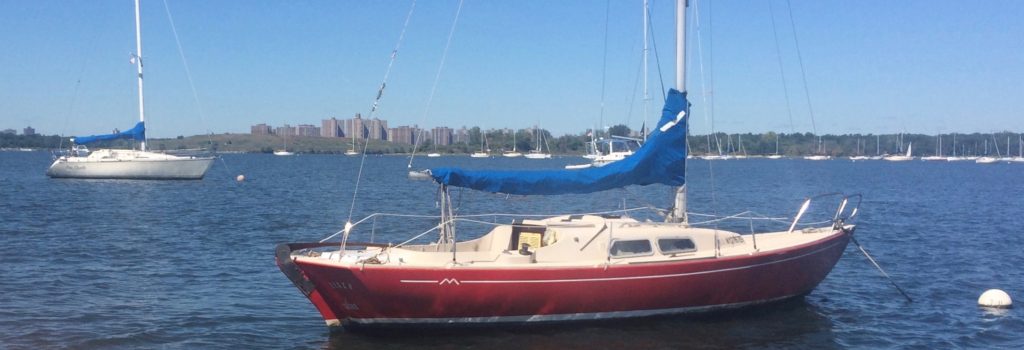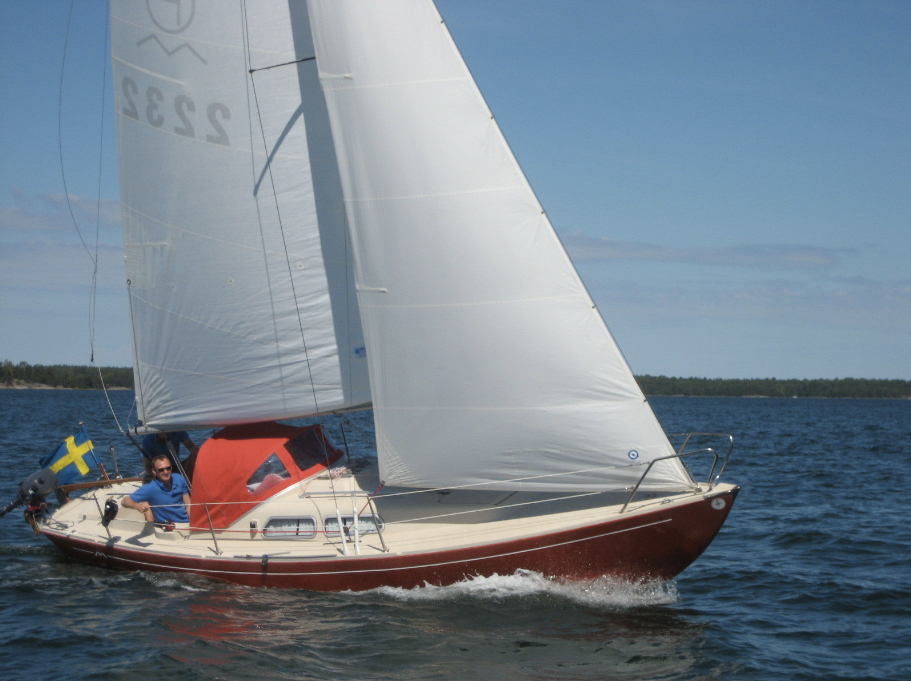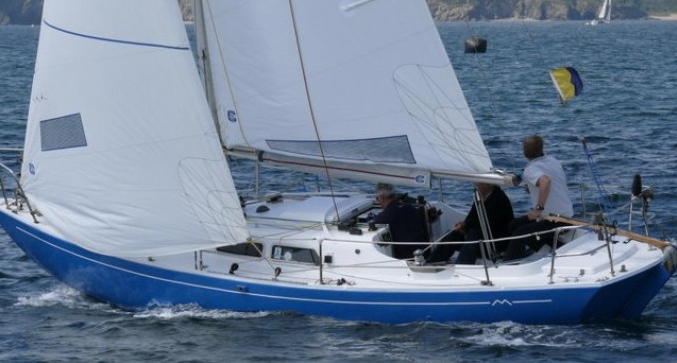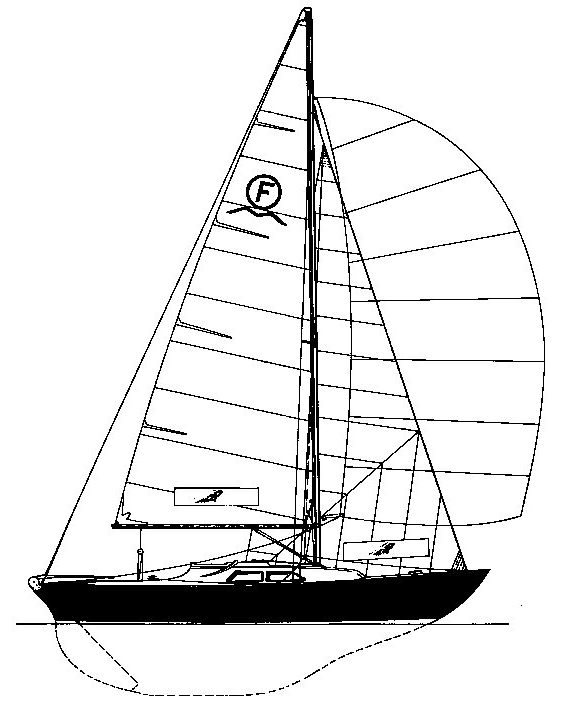We tried her out last weekend, and liked her… so we got her. Say hello to the newest acquisition in our fleet…

We’ve seen these boats around for a few years – and by around, we mean the world. Or at least the hemisphere. But these boats get around, literally and figuratively. “Silent Reach” was built in Sweden by the preeminent manufacturer of this class, Marieholm. We first saw them in the British Virgin Islands (BVI) at Biras Creek Resort. Then, back at the ranch on City Island, we saw the very one you see pictured above and learned what they were. And now she’s ours.
So, what’s the deal with Folkboats?
- Born of a design contest in Sweden in the 1940’s
- Over 5,000 have been built (prolific)
- Over 4,000 are probably still sailing (whoah)
- They started out as wood but became fiberglass in 60’s and onward
- Traditional design with full keel
- Point very well and are super seaworthy (circumnavigation-so)
- Popular all over
We sailed Silent Reach on a light wind weekend day with some motorboat chop. The wind was a little stronger when we were rigging, so we used the working (small) jib. Despite the smaller sailplan in light wind, and a dirty bottom, the boat pointed well, sailed fairly fast, and was maneuverable for a full keel design.
The next time out, after closing on her, we had more wind. So what did we do? We used the larger jib (genoa)! This is one stiff boat. Yet, she’s lively and fun to sail. Can’t wait to see her true pedigree when we clean her bottom.
International Folkboats are also known as Swedish Folkboats. They’re popular in Scandinavia of course, but they get around the world. We’ve seen references to a Transatlantic and a circumnavigation so far. That means these are ocean-capable boats, yet, they are fun on inland waters too for both daysailing and pocket cruising. The previous owner of Silent Reach sailed her to Block Island a few times.
Here’s a sister ship with the same color cabin top/deck and similar hull color (Silent Reach was the same red originally but had recently been repainted professionally)…

The one above is sailing with its working jib. Here’s one under genoa:

The boats were originally wood with wooden spars (masts and booms). The Marieholm ones that are prevalent are all glass outside except for the tiller. This makes them lower on maintenance yet still appearing quite traditional. The interiors have a lot of wood.
Engines could be inboard or outboard apparently. Ours is o/b. They were designed to have the engine in a well in the transom (see the hatch under the tiller in the shot above). Some put them on the transom too, as shown with the red sister ship further up.
What will we use her for? The sheer joy of sailing. She’ll predominately be a daysailer. She can be overnighted as well, although space is a little tight belowdecks. Ours has an Origo 2-burner stove and a porta potti. Nothing fancy, but with the V-berth and two settees, there are places to sleep. And being very stable, she won’t rock around as much as a lighter fin-keel design.

Despite being a more classic design with traditional transom and full keel, there are performance elements to the Folkboat. Note the fractional rig. The boats have adjustable backstays, for crying out loud! Plus, sliding gooseneck for the ultimate in shaping ability, and a cunningham for tweaking that shape. Large mainsails with manageable headsail choices make for performance and ease of handling.
“Silent Reach” will be available to our graduates (and well qualified outsiders) to rent as well as to our Sailing Club members. Come see, and sail, an example of sailing history that won’t go out of style!
Two articles on Folkboats…
Good Old Boat (The Folkboat: Little Beauty with a Big Heart)
Yachting World (‘Did you sail that thing here?’ – solo across the Atlantic in a Folkboat)
You certainly won’t be disappointed sailing a folkboat. Mine is 56 years old, and I’ve had it for 10 of those years in Hong Kong. Easy to sail. Handles light and heavy conditions well. Light on the helm and easily balanced such that I often leave the tiller for periods of time to do something else. Pretty to look at. Simple and straightforward to maintain. Inexpensive to buy parts for. Most important of all, you can experience the joy of sailing because she heels just enough and is close enough to the water with her low freeboard to give you a wonderful experience of sailing. Truly one of the finest and satisfying boat designs ever built. Just a little cramped down below. That is about the major criticism everyone has of them.
Thanks for thoughts, Darren! They’re amazing boats, and yes – I agree: they sail well in light winds as well, and points. Most of our Sailing Club members love our Folkboat. What’s the wind like in Hong Kong?